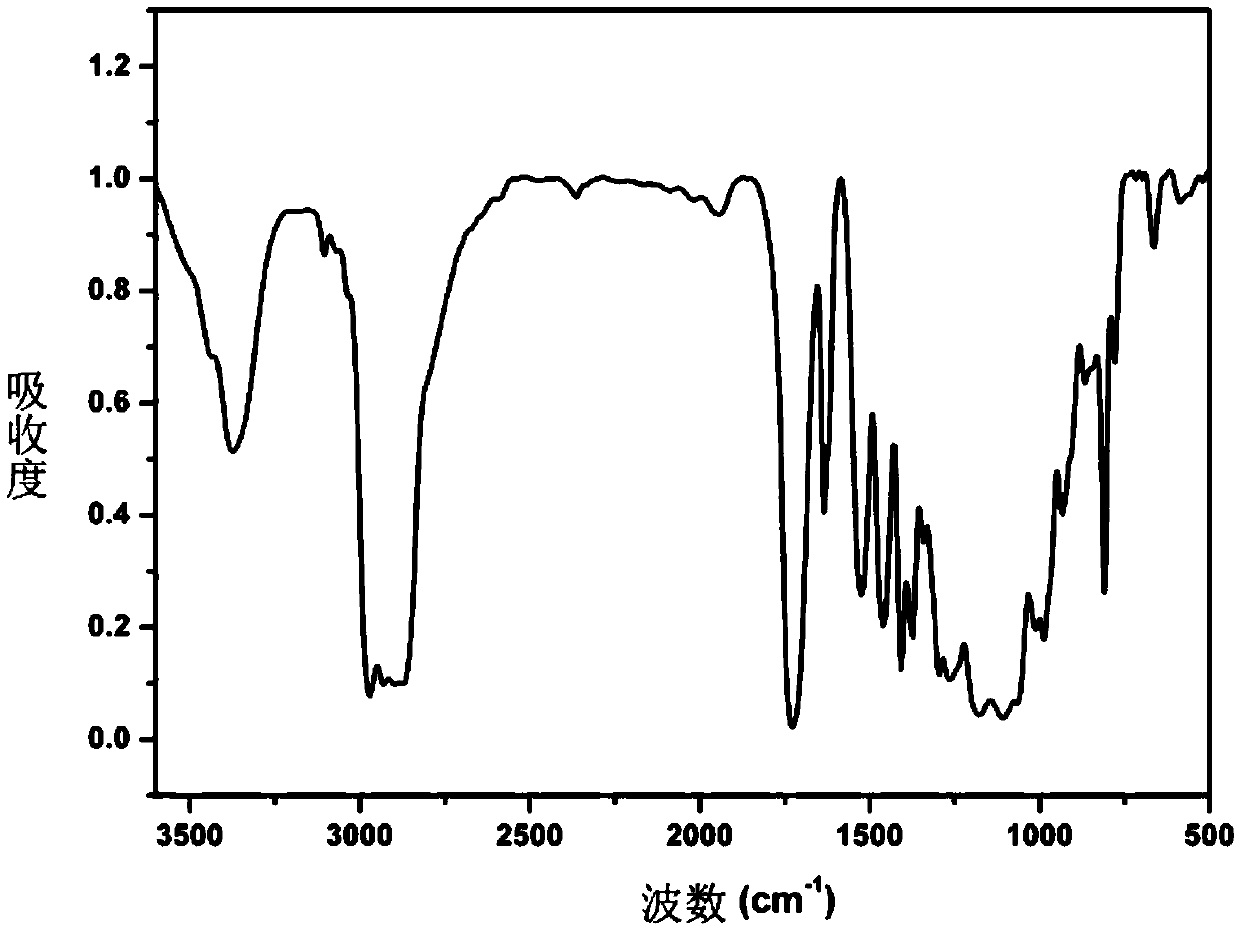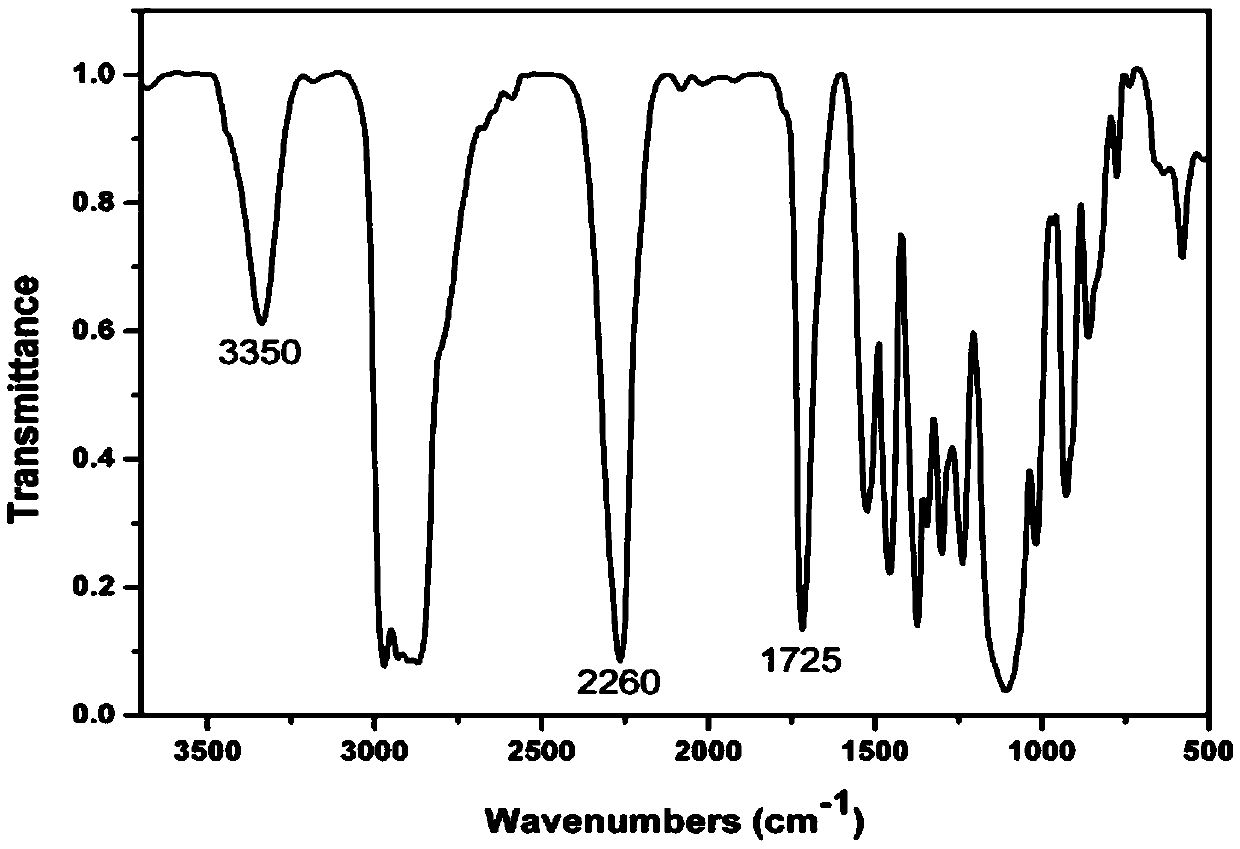Hydrophobic resin adhesive, preparation method and application thereof
A technology of hydrophobic resin and adhesive, applied in the field of stomatology materials, can solve the problems of unsatisfactory bonding interface quality, decreased bonding strength, micro-leakage at the edge of the restoration, etc.
- Summary
- Abstract
- Description
- Claims
- Application Information
AI Technical Summary
Problems solved by technology
Method used
Image
Examples
Embodiment 1
[0021] Accurately weigh 5.55 g of isophorone diisocyanate and add it to 20 g of polyether diol, add 0.1 g of dibutyl tin dilaurate, and react with mechanical stirring at 68°C. After 3 hours, 3g of hydroxyethyl methacrylate was added, and the reaction was continued for 3 hours to obtain the required polyurethane dimethacrylate of the present embodiment;
[0022] Accurately weigh 7.77 g of isophorone diisocyanate and 0.2 g of dibutyltin dilaurate into a 150 mL three-neck flask, and stir mechanically under the condition of oil bath temperature control at 75°C. Then, 9 g of polyether triol 900 was added dropwise, and the reaction was continued for 6 hours. After observing the absence of hydroxyl groups through infrared spectroscopy, the isocyanate group-terminated polyether triol required in this example can be obtained;
[0023] Accurately weigh 5g of polyurethane dimethacrylate and 0.9g of isocyanate group-terminated polyether triol, add 1.5g of methyl methacrylate, 2.5g of but...
Embodiment 2
[0028] Accurately weigh 5.55 g of isophorone diisocyanate and add it to 20 g of polyether diol, add 0.1 g of dibutyl tin dilaurate, and react with mechanical stirring at 68°C. After 3 hours, 3g of hydroxyethyl methacrylate was added, and the reaction was continued for 3 hours to obtain the required polyurethane dimethacrylate in this example;
[0029] Accurately weigh 7.77 g of isophorone diisocyanate and 0.2 g of dibutyltin dilaurate into a 150 mL three-neck flask, and stir mechanically under the condition of oil bath temperature control at 75°C. Then, 9 g of polyether triol 900 was added dropwise, and the reaction was continued for 6 hours. After observing the absence of hydroxyl groups through infrared spectroscopy, the isocyanate group-terminated polyether triol required in this example can be obtained;
[0030] Accurately weigh 6 g of polyurethane dimethacrylate and 0.9 g of isocyanate group-terminated polyether triol, add 1 g of methyl methacrylate, 2 g of butyl acrylat...
PUM
 Login to View More
Login to View More Abstract
Description
Claims
Application Information
 Login to View More
Login to View More - R&D
- Intellectual Property
- Life Sciences
- Materials
- Tech Scout
- Unparalleled Data Quality
- Higher Quality Content
- 60% Fewer Hallucinations
Browse by: Latest US Patents, China's latest patents, Technical Efficacy Thesaurus, Application Domain, Technology Topic, Popular Technical Reports.
© 2025 PatSnap. All rights reserved.Legal|Privacy policy|Modern Slavery Act Transparency Statement|Sitemap|About US| Contact US: help@patsnap.com



